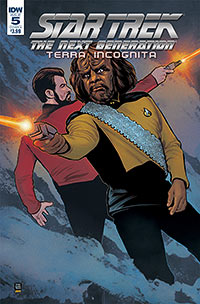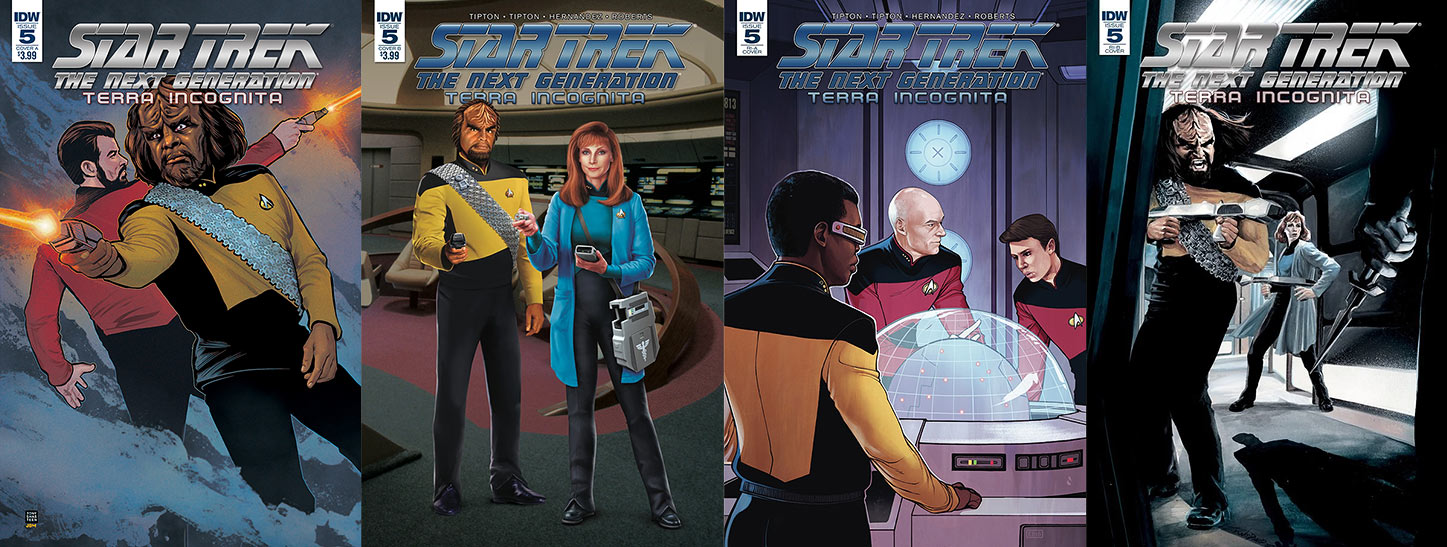Whenever I write about Star Trek: The Next Generation — Terra Incognita, I feel more like I’m critiquing a television show than reading a story. In the past I’ve mentioned how much like an actual television episode this book from Scott Tipton, David Tipton, and Angel Hernandez is, so I’d like to break that down further and discuss the comparisons in greater detail.
The story so far: as Terra Incognita #5 begins, the Enterprise has been called into assisting with the evacuation of the Lolligans, a species suffering from a planet-wide epidemic putting them on the verge of extinction. Lieutenant Barclay, Worf, La Forge, and Dr. Crusher are overseeing the operation, yet there is something about the plague that makes Dr. Crusher think that it can be cured; this is certainly a better option than evacuating an entire planet. With the evacuation fleet approaching, Crusher and company have just 24 hours to fend off enraged, demented Lolligans and solve the mystery behind this illness.
I can’t help but note that this is still the Mirror Universe version of Reginald Barclay, who stowed away aboard the prime Enterprise-D at the beginning of this series. We can recognize him as he has developed the habit of rolling up his tunic sleeves — emulating the sleeveless uniforms of the Terran Empire — which a subtle yet distinctive tell that shows that even though he may look identical to “our” Barclay, he doesn’t fit in this universe. It’s these little devices that the Tiptons put into their stories that connect with the audience.
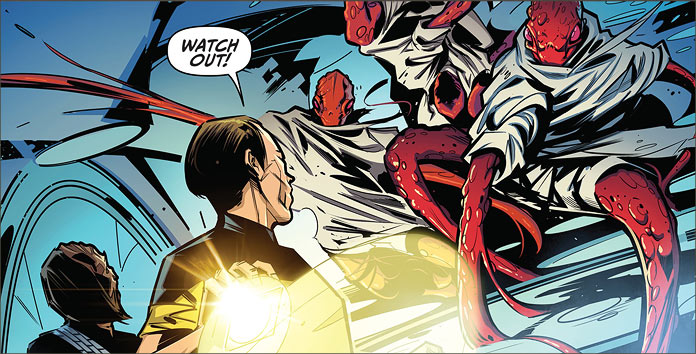
In terms of the television-like qualities of the books, there are a number. First: the stories are episodic in nature. Self-contained, they wrap themselves up by the end of each issue unlike a typical comic arc, which would be told over four or five issues. That isn’t typical of this comic, which instead, is like an episode in a more-serialized television season.
However, each issue is still connected to the overall back story of the looming threat of the Mirror Universe Enterprise crew hiding in the shadows. We learned from the 2017 Mirror Broken miniseries that the Next Generation counterparts from the other side see the prime universe as a hunting ground for much-needed resources.
There’s also a clear attempt to spread the camera focus around from character to character in these books — last issue was a Wesley-centric piece, where in this issue we see the spotlight on Worf and Crusher. It’s almost like their talent agents were whispering in the Tiptons’ ears, edging the writers to give their clients a little more attention. You can almost hear the interstitial music in the background as Crusher faces down Worf while making a command decision.
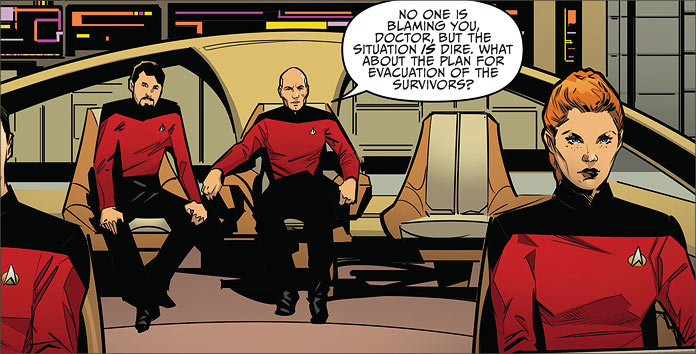
Finally, it’s the dialogue: completely authentic and relaxed, it’s truly television-worthy. The Tiptons’ scripting could have come from a lost Next Generation episode discovered in some forgotten vault. Good dialogue sets the basis for believable character interaction and this book has it in abundance.
As usual, Angel Hernandez’s art continues to dazzle us with its sharp accuracy. Hernandez is certainly one of the go-to Star Trek artists in IDW’s stable. This is a good thing, as not only does it grant Hernandez a degree of niche-specialization, but it also increases his profile among Trek comic readers.
- Cover ‘A’ is a fantastic action pose with Worf and Riker, fighting back-to-back in combat. From my favourite Trek penciller Tony Shasteen, this is a cover that is completely appropriate for the story and highlights the authentic relationships the Tiptons have created for us. Shasteen’s cover sets this book up for the reader with a high degree of enjoyment and proficiency.
- Cover ‘B’ is another photo cover, which I normally dislike, but IDW’s artists have continued the trend of digitally recreating the old Next Generation cast photos into a more illustrative look which fits the comic book presentation much better. This one of Crusher and Worf not only sets the scene but also the expectations for the book, and with the television quality of this story, this cover is completely appropriate.
- Retailer-incentive cover ‘A’ is an enjoyable one as well, from recurring artist Elizabeth Beals. While the scene seems to be a bit disconnected from the events of the story, it’s a very good presentation of the characters. But with the Tiptons’ intention to spread the camera attention among the characters, seeing a scene of Captain Picard, Ensign Crusher and Lieutenant La Forge isn’t too off the mark.
- My favorite Trek artist, J.K. Woodward, brings us retailer-incentive cover ‘B,’ an amazingly-dynamic image of both Doctor Crusher and Lieutenant Worf in combat, both armed with phaser rifles against a mysterious assailant. It’s a rich and vibrant picture and as always, Woodward’s accuracy as a painter just staggers my imagination. This is the best cover out of the lot.
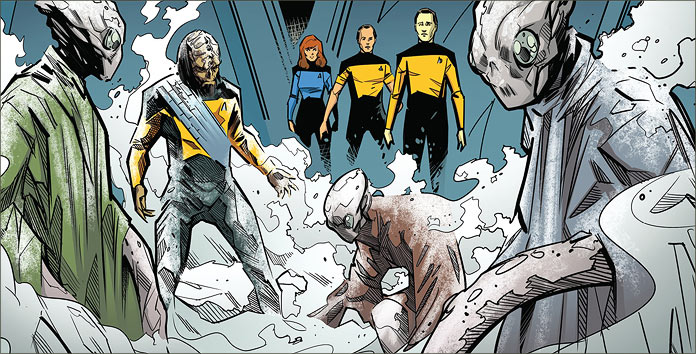
In short, this is the continuing story that Next Generation fans should to tune into. At the end of the story, we see another hint that the Mirror Universe may be out of sight — but not out of mind — as the final chapter in this story arrives in December.
The connective thread of the Terran Empire ties everything together, but it’s the perfect background for the Tiptons to show their expertise with themes, characters and the overall pacing of this show… er, comic.

